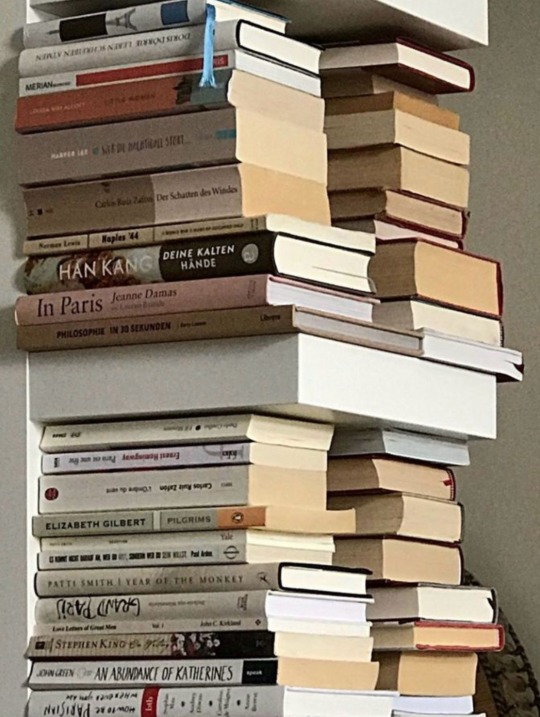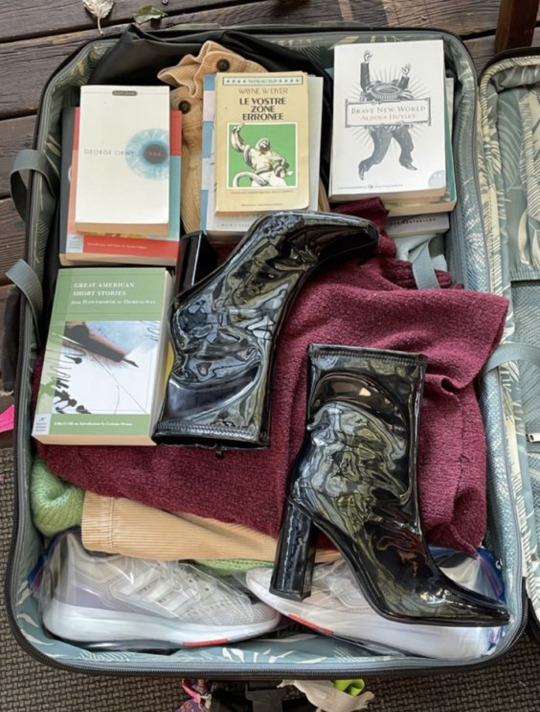#Educate yourselves
Explore tagged Tumblr posts
Text
Dan Peña says that number is closer to 0%:
“All the money pledged to impoverished countries gets stolen.” It's called "Money Laundering" and it ends up in the corrupt politicians pockets.
“Wealthy nations pledge $100-$500 million yearly. How much reaches those in need? $0.” “We could solve global poverty instantly, but corruption stops it.”
Everyone knows it, but nobody talks about it.
Donald Trump shut down the USAID website and X account. Those who send money to the Jews to help feed them never makes it there and they have been asking for that 18 years before Hitler ever came into power. Those heartbreaking commercials about the animals they want you to save. Same thing! Red Cross... Same thing! 🤔
#pay attention#educate yourselves#educate yourself#reeducate yourselves#knowledge is power#reeducate yourself#think about it#think for yourselves#think for yourself#do your homework#do some research#do your own research#do your research#ask yourself questions#question everything#money laundering#theft#thieves#criminal minds#war criminals#criminals minds#criminal#news#understand#government secrets#government corruption
294 notes
·
View notes
Text

#covid cartel#educate yourself#truthwillsetyoufree#wake the fuck up#knowledge is power#do your homework#educate yourselves#health is wealth#free gaza#free humanity#stop the wars
94 notes
·
View notes
Text
youtube
Trump and Musk expose one of the most corrupt Terror Forces in History.
#educate yourself#knowledge is power#war is hell#war is a racket#pay attention#educate yourselves#taxpayers#reeducate yourself#we are change#luke rudowski#Youtube
62 notes
·
View notes
Text










What You Need to Know about Project 2025
The GOP's Radical Plans for America's Future
graphics from @/pinballwizardess on tiktok
#politics#maga morons#project 2025#election 2024#us elections#joe biden#donald trump#abortion#pro life#pro choice#epa#global warming#please vote#vote biden#vote democrat#vote blue#fuck the gop#gop#reproductive rights#reproductive health#reproductive justice#reproductive freedom#education#educate yourself#educate yourselves#head start#christianity#christian privilege#jesus christ#civil rights
3K notes
·
View notes
Text
Just a reminder...
2919 - Remember when ABC refused to air Amy Robach’s "We have everything" story on the Epstein client list? 🤔
#pay attention#educate yourself#educate yourselves#wake the fuck up#wake up#do your own research#do your homework#do your research#do some research#exposing the truth#reeducate yourself#news#abc#government corruption#evil lives here#reeducate yourselves
942 notes
·
View notes
Text

#educate yourself#educate yourselves#Jewish hate#stand up to jewish hate#proud jew#jewblr#actually jewish#eretz israel#am yisrael chai#jumblr
2K notes
·
View notes
Text
Please stop sigmatizing small phalluses.
We see it in almost every queer space we go, and it is humiliating, degrading, and saddening that our own community can be so intersexist, altersexist, and transphobic, without even seeming to realize it.
We know that "small dick - big dick" is a joke, a meme, but frankly, its just not funny. Phallus size has been stigmatized and mocked so much that its caused countless people gender dysphoria, sex dysphoria, body dysmorphia, depression, anxiety, and stigma. This stigma leads to a lot of people with small phalluses having a more difficult time getting into relationships, because people are judgmental of their bodies. Small phalluses don't make a person bad in bed, nor is it something to be ashamed of.
Not only that, but it is rooted in intersexism. Micropenises are an intersex trait, and yet it is belittled, laughed at, and treated like some joke. People's bodies are not jokes.
Mockery of small phalluses, even if done with good intent or in "good fun", stigmatizes and humiliates real intersex people - people with congenital buried penises, clitoromegaly, fused labia & clitoromegaly, and similarly structured genitals. Please read (and reblog) about intersex variations & traits here, for a better understanding and compassion for their community - a community that very frequently overlaps with the trans community, and is a part of the LGBTQIA+ community as a whole.
It also stigmatizes altersex, transsex, transmasc, and non-binary people. This includes those that desire/have metoidioplasties and that desire/have T-dicks or enlarged clitorises. It also includes those that have penises/phalluses, and take estrogen (or intersex people who produce high estrogen) that causes phallus shrinking. It makes many people feel sad and ashamed of their genitals, as if there is something wrong with them.
We mean no hate to anyone that has made these jokes in the past. This post is simply a plea to expand your mindset, and think of the psychological and social damage those jokes do to real people.
Please reblog to spread awareness.
#lgbt#lgbtq#lgbtqia#body diversity#diversity#educate yourself#educate yourselves#education#intersex#intersex spectrum#actuallyintersex#altersex#transsex#transgender#trans#transmasc#trans guy#salmacian#clitoromegaly#micropenis#micro penis#non-binary#nonbinary#gender queer#enby#t-dick#tdick#congenital buried penis#buried penis#intersexism
580 notes
·
View notes
Text










In books we trust🤎💫📚
#reading is hot#books and reading#reading is sexy#reading#books aesthetic#books & libraries#romance books#booklover#bookworm#literature#hot and educated#education#educate yourself#educate yourselves#smart girl#study inspo#study aesthetic#study motivation#dark academia#college aesthetic#student#smart woman#dark femininity#beauty and brains#university#university student#college#college student#books#novel
447 notes
·
View notes
Text

Never Free
162 notes
·
View notes
Text
Reporter Ben Swann was fired from CBS-46 in Atlanta after airing the PizzaGate leaks. If you speak the truth, you get fired. The puppetmasters pulling the strings don’t want you asking the real questions. 🤔
#pay attention#educate yourselves#educate yourself#reeducate yourselves#knowledge is power#reeducate yourself#think about it#think for yourselves#think for yourself#do your homework#do your research#do your own research#do some research#ask yourself questions#question everything#news#ben swann#real news#truth be told#evil lives here#lies exposed#save the children#save humanity
390 notes
·
View notes
Text
PRESIDENT TRUMP: "The train that's being built between Los Angeles and San Francisco is the worst managed project that I think I've ever seen... Hundreds of billions of dollars over budget... We're going to start an investigation of that."
Nancy Piglosi, her husband, Dianne Feinstein and her husband are involved in this money laundering fiasco. The land was bought and sold 3 times through government grants so every taxpayer in the whole country has been paying for it. 🤔
#pay attention#educate yourselves#educate yourself#reeducate yourselves#knowledge is power#reeducate yourself#think about it#think for yourselves#think for yourself#do your homework#do your own research#do some research#do your research#ask yourself questions#question everything#government corruption#government secrets#government lies#evil lives here#fraud#truth be told#news#california#comifornia#money laundering#crimes against humanity#theft#criminal minds#justice is coming
313 notes
·
View notes
Text
Ron Paul: “Audit USAID... Shut it Down! 🤔
#pay attention#educate yourselves#educate yourself#reeducate yourselves#knowledge is power#reeducate yourself#think about it#think for yourselves#think for yourself#do your homework#do your own research#do some research#do your research#ask yourself questions#question everything#ron paul#government corruption#government secrets#gain of function#evil lives here#news#truth be told#crimes against humanity
186 notes
·
View notes
Text
Rep Harriet Hageman: The IRS is ILLEGALLY surveilling Americans
“We have learned is that the IRS, in fact has been using AI to access bank accounts of American citizens without any kind of a search warrant or even without any specific claim that they have committed a crime”
“An undercover journalist. — what they found is that the IRS has claimed that they have access to every single person's bank account.”
“This person also indicated that they've been working with the Department of Justice, and that they have absolutely no problem whatsoever going after the little guy to make sure that they're paying their taxes.”
“This is such a blatant violation of the Fourth Amendment”
It’s time to Abolish The IRS!
I feel the floodgates have been opened because the truth is coming out fast... BUCKLE UP! 🤔
#pay attention#educate yourselves#educate yourself#reeducate yourselves#knowledge is power#reeducate yourself#think about it#think for yourselves#think for yourself#do your homework#do your own research#do some research#do your research#ask yourself questions#question everything#truth be told#floodgates are open#buckle up#the storm is upon us#news
195 notes
·
View notes
Text
RUBIO: USAID with “rank insubordination” — “we had no choice but to take dramatic steps to bring this thing under control." 🤔
#pay attention#educate yourselves#educate yourself#reeducate yourselves#knowledge is power#reeducate yourself#think about it#think for yourselves#think for yourself#do your homework#do your research#do some research#do your own research#ask yourself questions#question everything#government secrets#government corruption#evil lives here#lies exposed#money laundering#drain the swamp#truth be told#news#marco rubio#fox news
154 notes
·
View notes
Text
Dr. David Martin: “There Are 63 Gain-Of-Function Biological Weapons Currently In Production In US Universities Right Now.”
RFK Jr to stop these psychopaths immediately! 🤔
Dr David Martin is a plethora of knowledge!
#pay attention#educate yourselves#educate yourself#reeducate yourselves#knowledge is power#reeducate yourself#think about it#think for yourselves#think for yourself#do your homework#do your research#do some research#do your own research#ask yourself questions#question everything#dr. david martin#news#gain of function#evil lives here#truth be told#government secrets#government corruption#lies exposed
183 notes
·
View notes
Text
BEWARE OF FRAUD!
This could be happening to you? 🤔
#pay attention#educate yourselves#educate yourself#reeducate yourselves#knowledge is power#reeducate yourself#think about it#think for yourselves#think for yourself#do your homework#do some research#do your own research#do your research#ask yourself questions#question everything#fraud#thieves#theft#be aware#watch for it#skimmers#card reader
177 notes
·
View notes